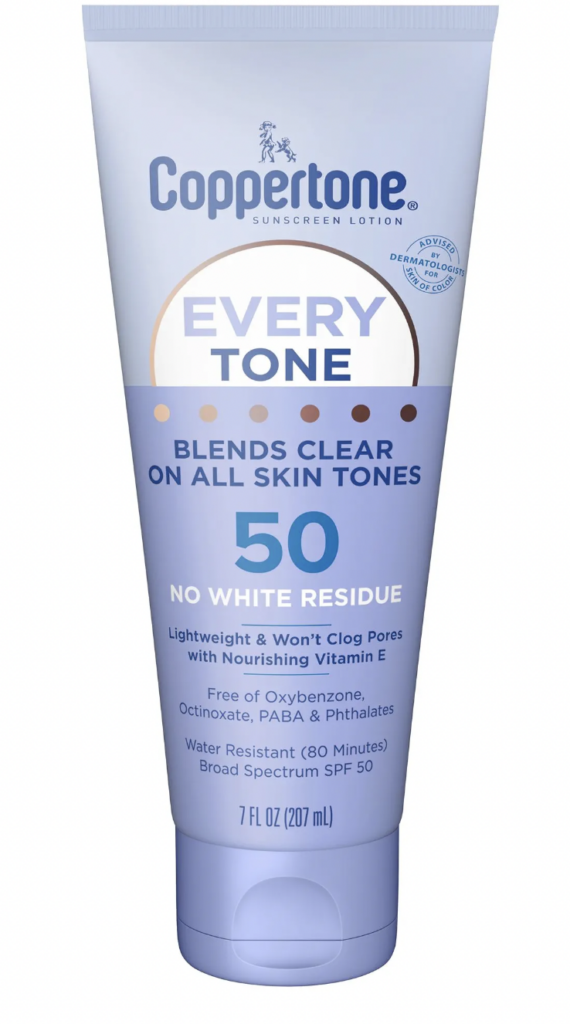
May is Skin Cancer Awareness Month, and although the sunshine feels so good on the skin, and looks so good gleaming off freshly oiled shoulders and legs, beware. The divinely melanated, meaning those of us with richer skin tones, aren’t as prone as other racial and ethnic groups to common Squamous Cell Carcinoma, which is commonly found on skins with low melanin content (those with Northern European genetics especially). But people of African descent are especially vulnerable to skin cancer’s most deadly form, melanoma, for complex reasons which may be cultural, political, socio-economic, genetic, and remain, at the moment, rather mysterious.
If you’re someone who doesn’t make sunscreen a regular part of your self-love routine, consider this:
- Some Black people may think that their skin is invincible. This belief seems to be supported by the beauty and vitality of Black skin, even as it ages. It truly don’t crack, and is slow to show wrinkles and creases. It’s also slow to sunburn. All of this may lead to Black people enjoying prolonged exposure to the sun without bothering to apply sunscreen.
- Black dermatologists are few and far between. Ditto for MDs of any complexion who truly understand Black skin. And we know that this problem is more than skin-deep: American health care and medical practice in general suffer from a massive blind spot when it comes to treating Black patients.
- Doctors may not be familiar with darker skin, or the ways that skin cancer “presents” (shows up) on Black skin. And, doctors simply may not take Black people’s concerns about skin cancer seriously.
- Even artificial intelligence interventions that attempt to catch early-stage skin cancer may fail to detect it in melanated skin because programmers may not include enough– or any!– samples of African-origin or other deeply melanated skin (i.e. Australian Aboriginal, or East Indian/South Asian).

We recently caught up with dermatologist Susan B. Taylor, MD, a Harvard Medical School graduate who has been in practice for 40 years in her native Philadelphia. Dr. Taylor also is Penn’s Vice Chair for Diversity, Equity and Inclusion. She says, “Black people are less likely to develop melanoma then white people, and when Black people do develop melanoma, it is on non-sun-exposed areas of the body such as nails, palms, soles of feet and mucous membranes. Therefore, sun does not factor into melanoma in Black people, and sunscreen does not help prevent melanoma in them. Black people can develop other types of skin cancer related to sun-exposure, but these are less common due to the protective melanocytes. Black people are more likely to die of melanoma.”
What this means, in a nutshell, is that we all need to step up our skin-protection game. This means using sun-protection even if we think we don’t “need” to, and also making a commitment to ourselves to check for hidden melanomas which are not caused by sun damage.

Let’s start with some good news, just in time for those barbeques and pool parties: EVERY TONE SPF 50 Sunscreen Lotion from Coppertone sent us this no-white residue sunscreen that we will be giving away next month!
This non-greasy, fragrance-free, everyday sunscreen contains Vitamin E, which revitalizes the skin. The broad-spectrum UVA/UVB protection drops up to 98% of the sun’s damaging UV rays, with none of the bad stuff: no oxybenzone, octinoxate, PABA and phthalates. And the reason this new lotion is especially nice for Black skin: it’s clear, and stays clear when it dries, so it won’t leave a white residue.
Insider tip about the two types of UV rays: UVA is the aging ray, robbing skin cells of their vitality, while UVB is the ray that literally burns the skin.
And here’s more good news. Coppertone EVERY TONE SPF 50 Sunscreen Lotion can even treat darkened areas, meaning lightening those patches of hyperpigmentation that may have formed in response to hormonal shifts (taking the Pill, pregnancy, menopause) as well as sun exposure. “Yes, there are studies that demonstrate that daily use of sunscreens for a year can reverse skin discolorations,” confirms Dr. Taylor.
Does this mean that you should oil up and bask like there’s no tomorrow? No. Experts still recommend that we all stay out of the sun at peak hours (especially at high noon), and wear a protective, broad-brimmed hat and sunproof fabrics whenever possible, as well as coating every inch of exposed skin with SPF 50.
But here’s where it starts to get a little weird. Back to our first point. Black people are significantly less likely to sunburn than lighter-skinned folks because of the blessing of melanin. Deeply pigmented skin produces more protective melanocytes than pale skin, reducing the damage done by free radicals (nothing to do with the Panthers), thus lowering the risk of skin cancer.
But yet…Black people with melanoma are more likely than any other group to die from this aggressive cancer. Medical News Today reports that only about 1 in 1,000 Black people will develop melanoma, but doctors typically diagnose melanoma much later in Black people than in other racial or ethnic groups. The fact that both patient and medical professional may not consider skin cancer to be much of a thing may lead to late-stage diagnosis, and the delay can be deadly.
Here’s a quick look at the main types of melanoma:
- Superficial Spreading Melanoma: Most common form across all demographics. Slow-growing.
- Nodular Melanoma: Appears on the surface and quickly extends into the deeper layers of skin. Aggressive. May present as a lump or knob on skin surface. Considered the most dangerous melanoma.
- Acral Lentiginous Melanoma: 70 percent of the reported melanoma cases among Black people are this form, ALM. Typically found in nail beds, palms of hands, soles of feet, between toes, and in the groin. Unrelated to sun exposure.
- Mucosal Lentiginous Mucosa: Forms on the lining of the digestive tract, anus, urethra, vagina, esophagus, mouth or throat. Difficulty swallowing, digestive problems including GERD-like symptoms, and vaginal, bowel or urinary tract issues may be a signs of this form of cancer. Unrelated to sun exposure.
- Lentigo Maligna Melanoma: Related to sun exposure, common in Hawaii, and only rarely found among Black people.
In fairness, deeply pigmented skin does make some melanomas more difficult to visually detect. We are reminded of the late, great Bob Marley who died far too young at the age of 36 from one of the varieties of melanoma called Acral Lentiginous Melanoma (ALM). When a black spot appeared under his toenail, Marley attributed it to a bruise from a soccer injury. Sadly, he was incorrect. Science doesn’t have a clear answer as to the origins of melanomas in Black people, other than the fact that the source is most likely genetic.
Here’s What You Need to Do Right Now
Sun-sense is common sense. Begin with the simple realization that no one is entirely immune. Starting now, protect your skin daily with sunscreen. And if you don’t already, begin checking your skin –every inch! — every month for changes. This includes checking between toes and in the intimate zones below the waist.
Skin cancer can begin as a new growth or can occur as changes in an existing mole or freckle. Not all moles are cancerous. In fact, most are not. But check yours out every four weeks, using this basic A-B-C-D-E method:
- Asymmetrical: Does the freckle or mole have an irregular or asymmetrical shape? (A round mole like a chocolate chip is less worrisome.)
- Border: Is there an irregular or oddly shaped border?
- Color: Look for uneven coloration, or strange hues such as blue or red.
- Diameter: Growths that are larger than the circumference of a pencil eraser are more likely to be cancerous.
- Evolving: Regardless of shape or size, has the growth changed? Rapid changes in any growth, including a mole you may have had your entire life, may signal cancer.
Yes, these signs and symptoms may be more subtle on darker skin. If you have lots of moles, skin tags and dark patches (and at 50+ who doesn’t?), see a dermatologist and clearly express your concerns. If you’re observing changes in a mole, tell your doctor immediately, and insist that it be biopsied. And please. If you’ve got a mole that bugs you, don’t DIY by grabbing a pair of scissors and snipping it off. Your body is not a craft project! Modern mole removal may be done painlessly, in seconds, by laser, leaving no scar behind, just beautiful, healthy Black skin to glow and gleam another day in the glorious sun.
Be the first to comment